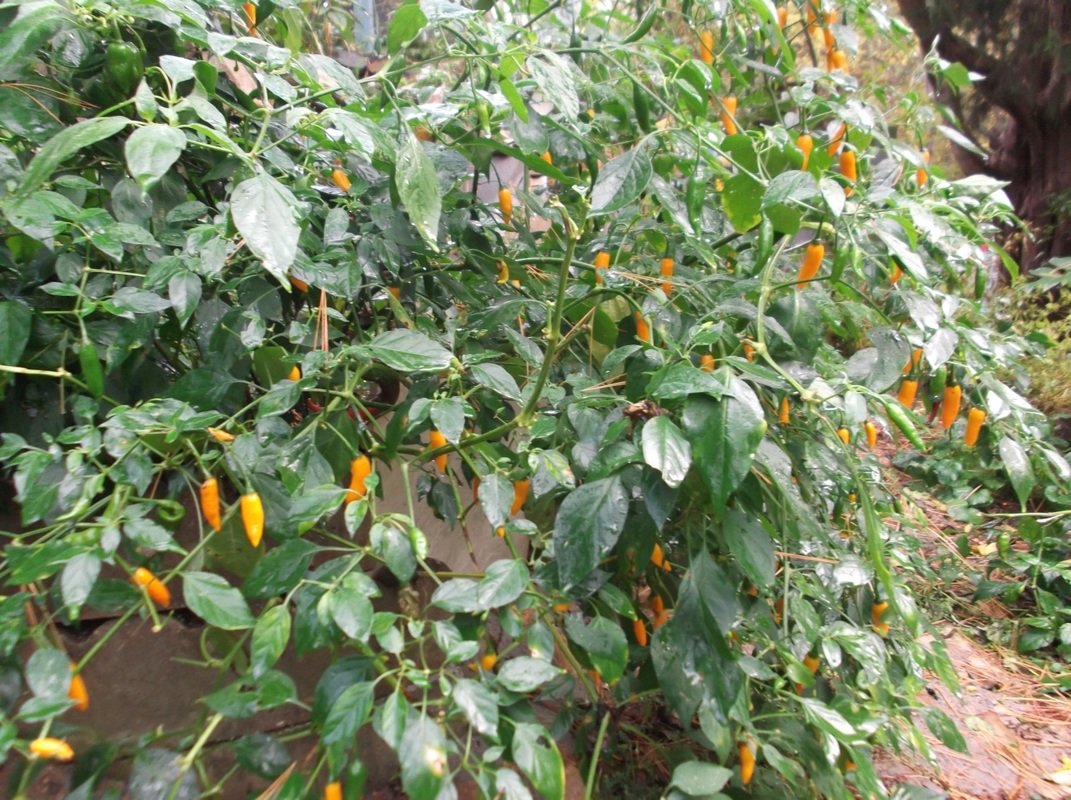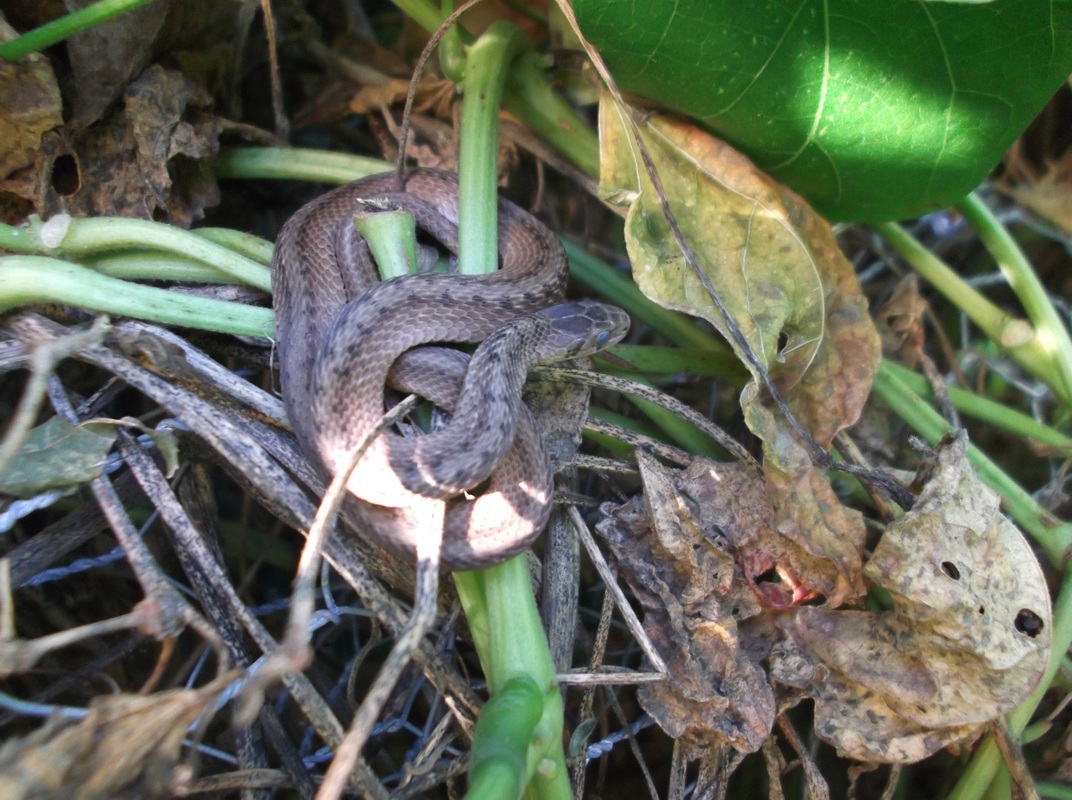
Autumn in central Virginia; the first frost is probably a week or more off but the trees are already shedding their partly turned leaves. For many of the trees around here, leaves begin going limp in September and then drop off quietly and unostentatiously in October.
After several hot days, the wind turned Friday evening and cold air from West Virginia is flowing over us. A perfect day for working in the yard.
I doubt the explanation for this year’s success was overnight natural selection. More likely, the key to success was more seeds, leading to a hundredfold improvement.
This African pepper is fairly hot but no more so than a cayenne. The yellow color is pleasant and artistic. A single pepper thinly sliced and de-seeded makes a good individual dose. There is a strong hard-to-name flavor other than heat, as found with habaneros, and all-in-all a great fresh hot pepper.
Also essayed was a recherché New Mexico chili which has produced only a few fruits, but with intricate heat and flavor. This variety will have its seeds saved and next year we will see if more seeds are the answer to production again.
The snake in the photo, which short of better identification I have dubbed a hybrid tea snake, climbed a bean vine to get well up into gnat territory, for its favorite prey.
Unmortared or free-stone walls, good dirt, and no chemical pesticides are the first steps to cultivating snakes. Insect predation is certainly a literal purpose in the life of snakes, and snakes are worthy of their hire. If you don’t get snakes after a year or two, then it’s on the snakes to keep trying. Human existence is predicated on some other purpose anyway.
Does everybody find titles this difficult? In my salvage bin there are pages from a manuscript I began in 1988 and worked on spasmodically for the next four years, which has never been called anything but “The Baltimore Dog Novel,” a frankly terrible title. TBDN (for short) once reached a length of 400+ pages, and I have yellowing typewritten pages to prove it. The total length of the surviving manuscript is closer to 100 pages, as scattered fragments.
Then there is my manuscript of "Geology Tours Unlimited," which is another appalling title. GTU was also once over 300 pages. The surviving elements are half that long. Hardly a tragedy. Shorter, less elegiac texts may well be preferred these days, and comparative brevity may be a wave of the future.
To my sensibility, such as it is, titles are more essential for short stories than for novels, often supplying the key to the lock. Novels may just require an identifier or mnemonic. Thomas Pynchon’s novels illustrate this perfectly. Gravity’s Rainbow is an ideal title for that book, an inspired title, but the book itself was unaffected by its name. Meanwhile V, Mason & Dixon, Vineland, and The Crying of Lot 49 are just good mnemonics. You have to call them something.






 RSS Feed
RSS Feed